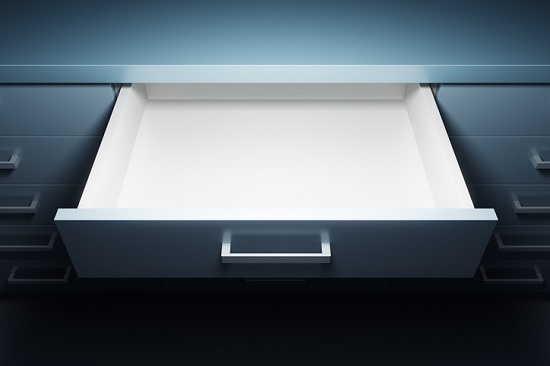
As hearing providers, there’s one particular style of hearing aid that we all worry about. It’s detrimental for the patient, and it can keep other people from even trying to give hearing aids a chance.
They’re better-known as “in-the-drawer” hearing aids. In comparison to behind-the-ear or in-the-canal hearing aids, ITD hearing aids never see the light of day, discouraging the patient and anyone the patient tells about their less than ideal experience.
For the millions of individuals that have obtained hearing aids, a good number will call it quits on the possibility of better hearing for one reason or another. But with modern day technology, we know that this should not be the case.
But hearing aids can be complicated. There are many things that can go wrong, leading to an undesirable experience and causing people to give up. But there are ways to protect against this, actions you can take to assure that, with a little patience, you get the best results.
If you’ve had a bad experience in the past, know somebody who has, or are considering giving hearing aids a shot, you’ll want to continue reading. By understanding the reasons some people give up on hearing aids, you can eliminate the same mistakes.
The following are the principal reasons people give up on hearing aids.
1. Purchasing the wrong hearing aid or device
Let’s start with the fact that everyone’s hearing is distinct. Your hearing loss, just like your fingerprint, is also unique to you. In addition, most people with hearing loss have more difficulty hearing higher-pitched sounds, like speech, as compared to other sounds.
Which means that, if you select a device that amplifies all sound evenly, like most personal sound amplifiers, sound quality will be affected, and you’ll still most likely be drowning out speech. You need a hearing aid that is programmed to amplify the distinct sounds and frequencies you have difficulty with, while suppressing background noise in the process.
Only programmable digital hearing aids have this ability.
2. Improper hearing aid programming or fitting
Seeing as hearing loss is unique, the hearing aid must be custom-programmed for you specifically. If the settings are inappropriate, or your hearing has changed through the years, your hearing professional may have to adjust the settings.
Far too frequently, people give up too soon, when all they require is some adjustment to the amplification settings. Additionally, if your hearing changes, you might need the settings updated. Think of it like prescription glasses; when your vision changes, you update the prescription.
Also, nearly all hearing aids are custom-shaped to the contours of the ear. If you find the fit uncomfortable, it may either just take some time to get used to or you may need a new mold. In either case, this shouldn’t prevent you from achieving better hearing.
3. Not giving hearing aids an opportunity to work
There are two problems here: 1) managing expectations, and 2) giving up too soon.
If you think that hearing aids will immediately return your hearing to normal, you’re setting yourself up for disappointment. Hearing aids will improve your hearing drastically, but it takes some time to get used to.
In the beginning, your hearing aids might be uncomfortable and loud. This is normal; you’ll be hearing sounds you haven’t heard in many years, and the amplification will sound “off.” Your brain will adjust, but not immediately. Plan on giving your hearing aids about 6-8 weeks before your brain properly adjusts to the sound.
Your persistence will be worth it—for patients who allow themselves time to adjust, satisfaction rates escalate to over 70 percent.
4. Not being able to hear in noisy surroundings
Patients with brand new hearing aids can come to be easily overwhelmed in crowded, noisy situations with a lot of sound. This can happen for a few reasons.
First, if you right away begin using your new hearing aid in noisy settings—before giving yourself an opportunity to adapt to them at home—the sound can be overpowering. Try to adjust in calmer environments before testing at a loud restaurant, for instance.
Second, you’ll have to adjust to the loud environments as well, just like you did at home. It’s typical to have one negative experience and give up, but keep in mind, your brain will adapt after some time.
And last, you may just need to update your hearing aids. The latest models are becoming significantly better at eliminating background noise and boosting speech. You’ll want to take advantage of the new technology as the pace of change is fast.
It’s true that hearing aids are not for everyone, but the next time you hear a story about how hearing aids don’t work, you should start questioning if any of the above is applicable.
The fact that hearing aids didn’t work for somebody else doesn’t mean they won’t work for you, particularly if you work with a trustworthy hearing care provider. And if you’ve had a bad experience in the past yourself, maybe a clean start, better technology, and professional care will make all the difference.
